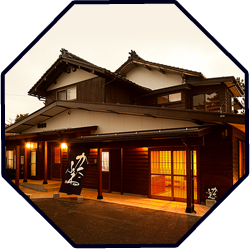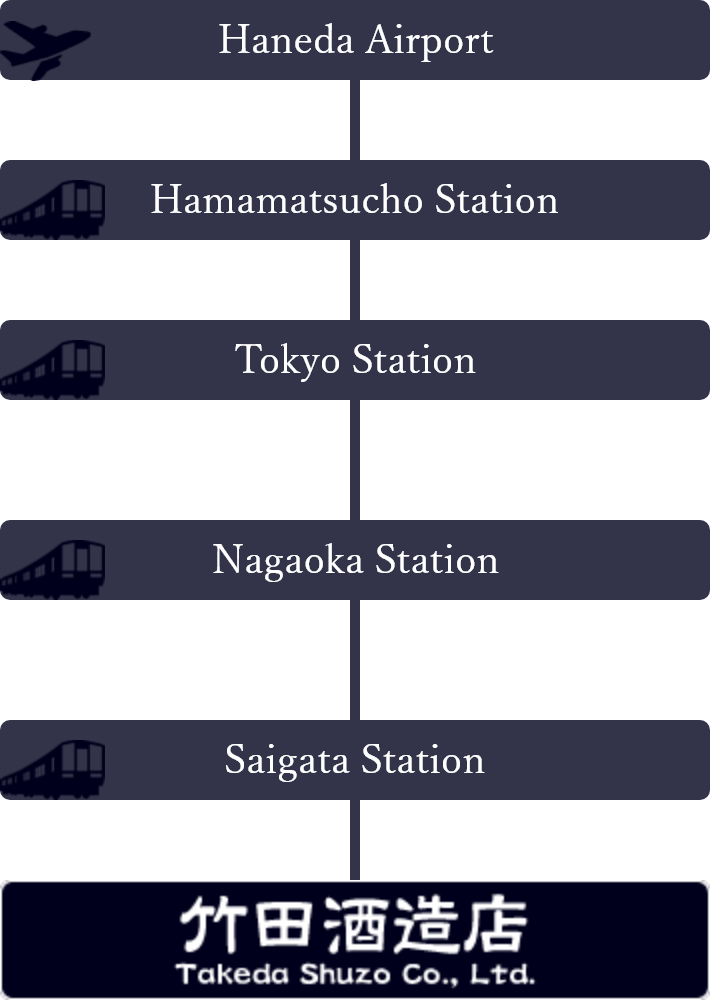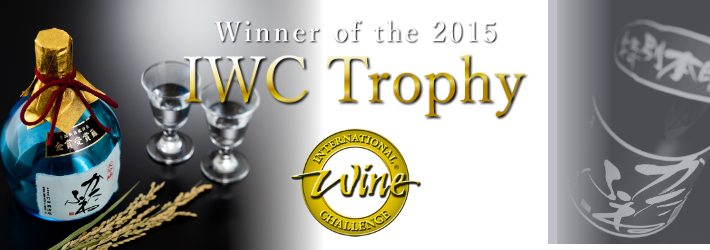Takeda Shuzo in Japan is a sake brewery that makes “Katafune” (winner of the IWC Trophy in the Japanese Sake Category).
We sell refined and unrefined sakes using Koshitanrei and Koshiibuki rice.
- HOME >
- For buyers
 International-standard taste
International-standard taste
produced from a small brewery
This is a full-bodied and mellow sweet sake blended with five flavors. This is one of the leading sakes in Japan and has twice won the IWC Top Award. Please relish this exquisite taste that has been approved by those from around the world.
-
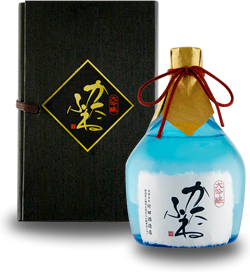
 [Top-quality sake brewed from rice grains milled to 50% of weight or less]
[Top-quality sake brewed from rice grains milled to 50% of weight or less]
This is wonderful sake made with both traditional and the latest techniques. This is a treasured drink that was never previously released by our brewery.
Suggested retail price(JPY):
720ml ¥6,600(Including vanity case) -
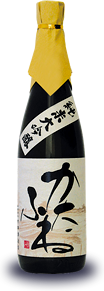
 [Top-quality sake brewed without added alcohol or sugar from rice grains milled to 50% of weight or less]
[Top-quality sake brewed without added alcohol or sugar from rice grains milled to 50% of weight or less]
This is a luxurious drink with both the brilliance of daiginjo and the richness of junmai that is even praised by willful connoisseurs. Please make sure to relish the depth of this Japanese sake.
Suggested retail price (JPY):
1800ml ¥7,040 / 720ml ¥3,520 -
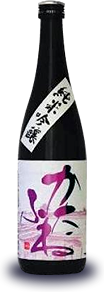
 [Sake brewed without added alcohol or sugar from rice grains milled to 60% of weight or less]
[Sake brewed without added alcohol or sugar from rice grains milled to 60% of weight or less]
This is excellent sake in the authentic style made with just rice and rice-malt. This taste can be called the origin of rich and mellow Japanese sake that fully draws out the flavor of the rice inherent in sake from Japan.
Suggested retail price (JPY):
1800ml ¥4,620 / 720ml ¥2,310 -
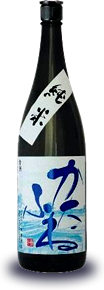
 [Sake brewed without added alcohol or sugar]
[Sake brewed without added alcohol or sugar]
This is a popular kind of sake made with just rice and rice-malt. Please feel free to enjoy the “blessings of the land.”
Suggested retail price (JPY):
1800ml ¥3,058 / 720ml ¥1,529 -
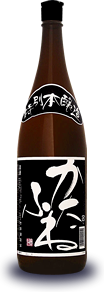
 [Special pure sake brew]
[Special pure sake brew]
This is a fragrant drink which can be enjoyed by anyone. This is great either warmed up or cooled down because it has a light feel when drunk in addition to the depth of its flavor.
Suggested retail price (JPY):
1800ml ¥2,838 / 720ml ¥1,419
“Katafune” from the Takeda Shuzo won the trophy (top award) in the Japanese Sake/Honjozo (Pure Sake Brew) Category at a competitive show with international authority (IWC: International Wine Challenge) in 2015. This is the second time that “Katafune” has won this trophy (top award) following on from its triumph two years ago in 2013.
There were entries by 44 kinds of Japanese sake from 44 breweries in the Honjozo Category in 2015. These sakes were given gold medals, silver medals, bronze medals or recommend sake prizes. The winner of the trophy was chosen as the top award from among the sakes given gold medals.
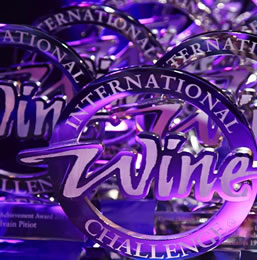
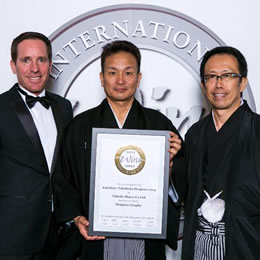
The International Wine Challenge (IWC) is a wine competition that is held every April in the United Kingdom. The Sake Category was established at this event in 2007. More than 300 judges taste wines and sakes over two weeks to decide the winners in that year.


| 1990 | Gold Award |
| 1991 | Gold Award |
| 1992 | Gold Award |
| 1993 | Gold Award |
| 1997 | Gold Award |
| 2000 | Gold Award |
| 2004 | Gold Award |
| 2006 | Gold Award |
| 2010 | Gold Award |
| Year | Category | Exhibited Sake Brand | Prize |
| 2015 | Ginjo Category | Katafune Junmai Ginjo | Gold Award |
| 2014 | Ginjo Category | Katafune Junmai Ginjo | Gold Award |
| 2013 | Ginjo Category | Katafune Junmai Ginjo | Silver Award |
| 2012 | Daiginjo B Category (Polished grain rice ratio: 50% or less) | Katafune Daiginjo | Gold Award |
| Junmai Category | Katafune Junmaishu | Silver Award | |
| 2011 | Daiginjo B Category (Polished grain rice ratio: 50% or less) | Katafune Daiginjo | Gold Award |
| Katafune Junmai Daiginjo | Gold Award |
*Only those that won the Excellence Award
| Year | Number | Category and Prize |
| 2015 | 85th | Junmai Category Excellence Award |
| 2014 | 84th | Ginjo Category Junmai Category Excellence Award |
| 2012 | 82nd | Ginjo Category Junmai Category Excellence Award |
| 2011 | 81st | Ginjo Category Excellence Award |
| 2010 | 80th | Ginjo Category Kanzake (Warm Sake) Category Excellence Award |
| 2009 | 79th | Ginjo Category Kanzake (Warm Sake) Category Excellence Award |
The Japanese sake “Katafune” has been made in accordance with traditions that have held fast since the closing days of the Edo Period (1603 to 1868) for 150 years from our establishment. We will now take a look at the brewing processes of Katafune.

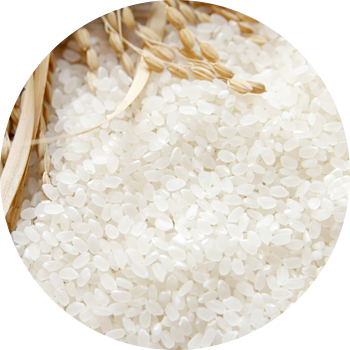
First, we polish the rice to shave off the unnecessary parts of unpolished rice. Next, we wash and submerge this rice in water. After this, we steam the rice until it is in a condition like that of elastic okowa (glutinous rice steamed with red beans). “Koshitanrei,” “Koshiibuki” and “Yamadanishiki” are used for the rice in Katafune.


- We sprinkle koji (mold grown on rice) over the steamed rice and then leave for about two days and nights in a kojimuro (room for producing koji) kept at a high temperature and high humidity. The best koji is produced over these two days by being carefully controlled with a human touch day and night while ensuring a balance between the shape and temperature.

- We make “shubo (yeast mash)” to cultivate in large quantities the yeast that governs the alcohol fermentation. We mix the koji and some water into the steamed rice. We then add yeast and leave to propagate over about two weeks. The “shubo” that develops the yeast to produce the alcohol can be called the “mother of sake.”

- We transfer the shubo to a large tank. We then divide and mix together the rice, koji and water three times. The koji mold converts the rice starch to sugar here. This sugar is then transformed into alcohol by the shubo (= fermentation). The fluid at this time is called “moromi (main fermenting mash).” We use the underground water on our premises for the water necessary here. We have used this underground water since we first started sake brewing in this area. However, in fact, this water is somewhat hard and so it is hard to handle in sake brewing. Nevertheless, it is because of this water that Katafune gets its featured richness and sharpness. Moreover, carefully supplying moromi at low temperatures adds a good taste to the sake and harmonizes the five flavors.
We squeeze the completed moromi and then divide it into sake and sake lees. We then filter this in order to remove the impurities that give rise to odors.

Yeast fungus and enzymes will remain in the sake even with filtration. This has the potential to alter the taste of the sake. Therefore, we perform low-temperature heat sterilization called heating to stabilize the quality of the sake. It is usual to raise the temperature of all sake at once with a machine in this process. However, we immerse our bottled sake in hot water and slowly warm each bottle one by one (this process is called “binkanhiire”). We then store our sake at low temperatures. This carefully ferments the sake to increase the sweetness and taste.
| 1866 | Seizaemon Takeda started brewing in Kamiko Funatsu, a small fishing boat anchorage, at the end of the Edo Period (1603 to 1868) |
| 1990 | Masanori Takeda was appointed the current representative director (ninth generation) |
| Present Day | The ninth generation representative director Masanori Takeda is continuing to protect and brew the taste of Katafune together with his son Takeshi (tenth generation) |
| Company Name | Takeda Shuzo Co., Ltd. |
| Address | 171 Kamikobunatsuhama, Ogata-ku, Joetsu-shi, Niigata 949-3114 |
| TEL | +81-25-534-2320+81-25-534-2320 |
| FAX | +81-25-534-4542 |
| Representative Director | Masanori Takeda |
| Number of Employees | 4 |
| Year of Establishment | 1866 |
